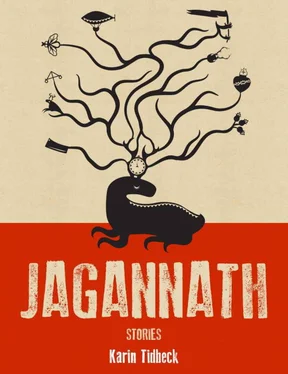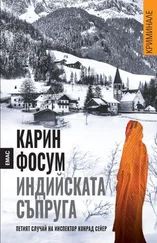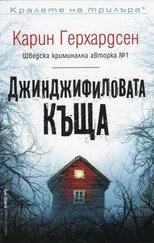One remarkable exception is documented in an eerie account from the nineteenth century, about the entity known as Sjungpastorn.
Margareta Persson (1835—1892) was the schoolmistress of Hålträsket, a village located in the mid-north of Sweden. She kept a diary for most of her life, meticulously cataloguing events and people of the village. After her death the diaries were donated to Umeå Heritage Museum.
In late November of 1867, during the last great famine in Scandinavia, Persson documented the passing of the local priest. No replacement came, and there was no easy way to travel elsewhere for mass.
The cold deepened and the days shortened as the year drew toward its end. Two villagers killed themselves, one by hanging and one by shooting. Three died of starvation. The desperation is evident in Persson’s diary: “School is closed, because the children are too weak or sick to attend. I spend most of the day in bed. I do not quite want to die. I am just not sure that I have it in me to live.” ( The Diaries of Margareta Persson, Umea Heritage Museum, book 8, p 65)
Then, early on Christmas morning, a stranger arrived. Ms. Persson writes.
We were lighting candles in the chapel. We had decided to keep our own little julotta [5] The main Christmas church service in Sweden at the time, held at 4:00 AM on Christmas day.
here, as going to Vargfjärda was unthinkable. As we lit the candles, I heard song, and I saw someone standing at the pulpit. It was a man, all dressed in black. I cannot describe it properly, but he was singing to us, and it was as if my head brightened.
As the villagers filed into the chapel, the strange man proceeded to hold a Mass, of sorts.
Although the chapel is quite small, I could not see his face clearly. It was as if radiance obscured his features. He opened his mouth, and a sound both like and unlike song came out. I could not make out the words, but the song reached right into my chest and unravelled an ache I had not known was there. All around me, people were crying and laughing, screaming and moaning; we reached out to him like drowning children. He stepped down from the pulpit and moved among us, embracing us and laying his hands on us. He laid his arms around me; he smelled of myrrh and roses. ( Diaries, book 8, p. 73)
The priest earned the name Sjungpastorn, “the sing-pastor.” He held Mass not only on Sunday mornings, but every single morning for the better part of a year. The Masses followed the same pattern as the first on Christmas morning: Sjungpastorn would stand at the pulpit and sing his wordless song, and the villagers sang along. At the end of the Mass, he would walk among the pews and touch or even embrace the people.
Ms Persson doesn’t describe the man in great detail. What she does say is very interesting, elaborating on her observation that she “could not see his face clearly”: he was “not fully formed, like a clay doll or a new-born child.” ( Diaries, book 8, p. 95) Furthermore, the man doesn’t speak, but produces other types of noise (the same type of phenomenon is described in Selma Lagerlöf’s “En historia fran Långsjö,” [6] Lagerlöf, Selma: Troll och människor, Albert Bonniers Boktryckeri, Stockholm, 1915, p. 95.
about the appearance of a strange-looking cow who couldn’t moo). Lastly, being close to him creates an intense feeling of bliss, and he regularly touches the villagers. All these are characteristics of Pyret, and in chronicling them Ms Persson finally gives us a possible clue to Pyret’s procreation cycle.
In the autumn of 1868, Sjungpastorn began looking poorly and greyish. Ms Persson mentions that he began touching people outside of Mass, specifically men. It didn’t stop there. On the night of September 20th, someone knocked on Margareta’s door.
It was Emilia Magnusson, saying that Sjungpastorn had lain down with Olof Nilsson while Olof was sleeping. I said that Olof must have had a nightmare, but then Emilia told me that Olof’s wife had been witness to it. She had been sitting with an ailing cow, and when she came into the bedroom saw Sjungpastorn in the bed, straddling her husband. She had fetched the farmhand, who had seen it too. They were afraid to intervene but made enough noise to wake Olof up, who then started screaming, and Sjungpastorn fled out a window and disappeared into the forest. (Diaries, book 9, p 82)
Sjungpastorn was never seen again. It does seem that he was nearing the end of his life cycle and therefore tried to procreate; that he chose a man indicates that he was looking for sperm to fertilize an egg. There is no mention in Ms Persson’s diaries of Pyret—perhaps because she didn’t know of the legend, or the villagers never made the connection. After all, Sjungpastorn resembled a man and not a beast.
My Own Investigations into the Situation at “Lillbo”
So far, my findings have mostly fallen within the realm of folklore, but I am about to present modern-day evidence that we are not dealing with a cryptid but a real being. I have previously stated that accounts of Pyret assuming human form have been extremely rare. Recent events at the village of “Lillbo” hint at a new development. While unraveling Margareta Persson’s account of Sjungpastorn, I met an informant at the Umeå Heritage Museum. A stocky woman in her eighties, she worked as a volunteer at the museum. When she heard about my area of research, she immediately asked me to interview her. Please note that the informant’s name and the village’s name have been changed for their protection.
Annika M was born in Lillbo in the 1931, raising the population from thirty-five to thirty-six. Situated in the region of Dalarna, the village had grown up around a foundry, which was shut down in the early twentieth century. Like most of her generation, Annika left in her teens to find work elsewhere, eventually settling in Umeå. She would not return to Lillbo for thirty years. In a taped interview, Annika told me of the events that took place when she finally did return.
It was in October 1978 when Annika’s father unexpectedly called her. She hadn’t spoken to her parents for several years, having broken off contact with them because she felt they were “bitter” and “stuck in the past.” Now pensioners in their late sixties, they remained in Lillbo. Her father begged Annika to visit, although he wouldn’t explain why: “My father had never talked to me like that before. I thought one of them must be ill or dying, so I got into my car and drove there as quickly as I could.”
The village was no better than she remembered it, with ”a single main street, a dirt road really… some houses on each side of the road, and the little grocery store in the middle. The forest is littered with abandoned cottages.” As she came to her parents’ house, she quickly had the feeling that something was wrong.
I had been expecting them to be old and frail — sixty-seven was ancient to me then, you know — but they looked… sort of plump and shiny. Like well-fed toddlers. And something was just off. Especially with Mother. She was sitting in the kitchen sofa with this stiff grin, almost from ear to ear. I thought, that’s it. It’s Alzheimer’s.
Before Annika could greet her mother, her father pulled her with him into the living room and closed the door. In hushed tones, he told her a story.
A group of strangers had settled in the village some time ago. They didn’t speak Swedish, but were light-skinned, so Father had thought maybe they were defectors from the U.S.S.R. “They came visiting all the time,” he said. “We thought it was nice at first. They made you feel really good, you know? They made us feel young. But now we’re prisoners.”
Читать дальше












![Карин Тидбек - Аматка [ЛП]](/books/438406/karin-tidbek-amatka-lp-thumb.webp)